Castle of Santa Severa
Castle of Santa Severa: how to get there, what to see, museum opening hours and other useful informations to organize your visit the best of it.Castle of Santa Severa is one of the most important monuments of archeological historic interest on the Tirrenean coast north of Rome. Perfect destination for who wants to visit the old Medieval district and also spend a relaxing day by the sea!
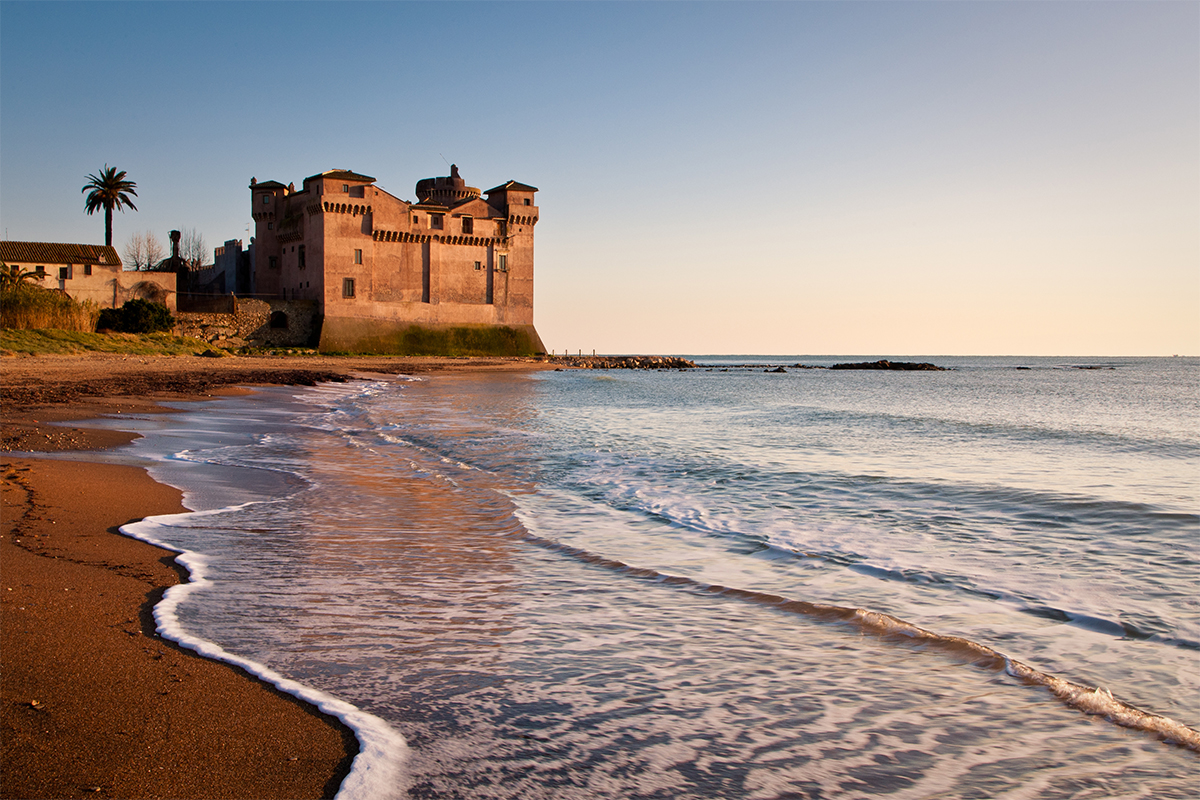
Castle of Santa Severa
CASTLE OF S. SEVERA: HISTORY NOTES
The castle rises over the place of Pyrgi, the port city linked to the anticient Caere, current Cerveteri founded between the end of the seventh and beginning of the sixth century BC. The Etruscan city of Pyrgi extended all around the port for about 10 hectares, including, besides the area occupied by the castellan district, also the area of the sanctuary located at the south end, subject to excavating by the Institute of Etruscology of the Università la Sapienza of Rome, for over fifty years now.
Over the third century BC, with the Romanization of the coast area, over the Etruscan built-up area was founded the castrum romano of Pyrgi, surrounded by strong polygonal-shape walls. The place was probably inhabited non stop until Late Antiquity (forth-fifth century BC) and it was exactly thanks to the continuty of life over the remains of the castrum that in Medieval times, the village known as Castellum Sanctae Severae was formed.
The actual Castle was built in the fourteenth century and the village was formed gradually in different building stages over the fifteenth and sixteenth centuries.
Over the centuries, the ownership of the Castle has gone through many owners until 1482, when it was transfered to the Order of the Holy Spirit and remained theirs for well five hundred years until 1980. Between the sixteenth and seventeenth century, it was also a place where many popes rested and stayed, for example: Gregory XIII, Sixtus V and Urban VIII. After a period of great splendour reached exactly in the seventeenth century, the Castle has experienced a long and slow decay. In 1943 it was used by Germans as a strategic military emplacement. Today,the monumental complex is owned by the Lazio Region, managed by the regional company LAZIOcrea in agreement with MIC, Soprintendenza Archeologia Belle Arti paesaggio Etruria meridionale and the Municipality of Santa Marinella
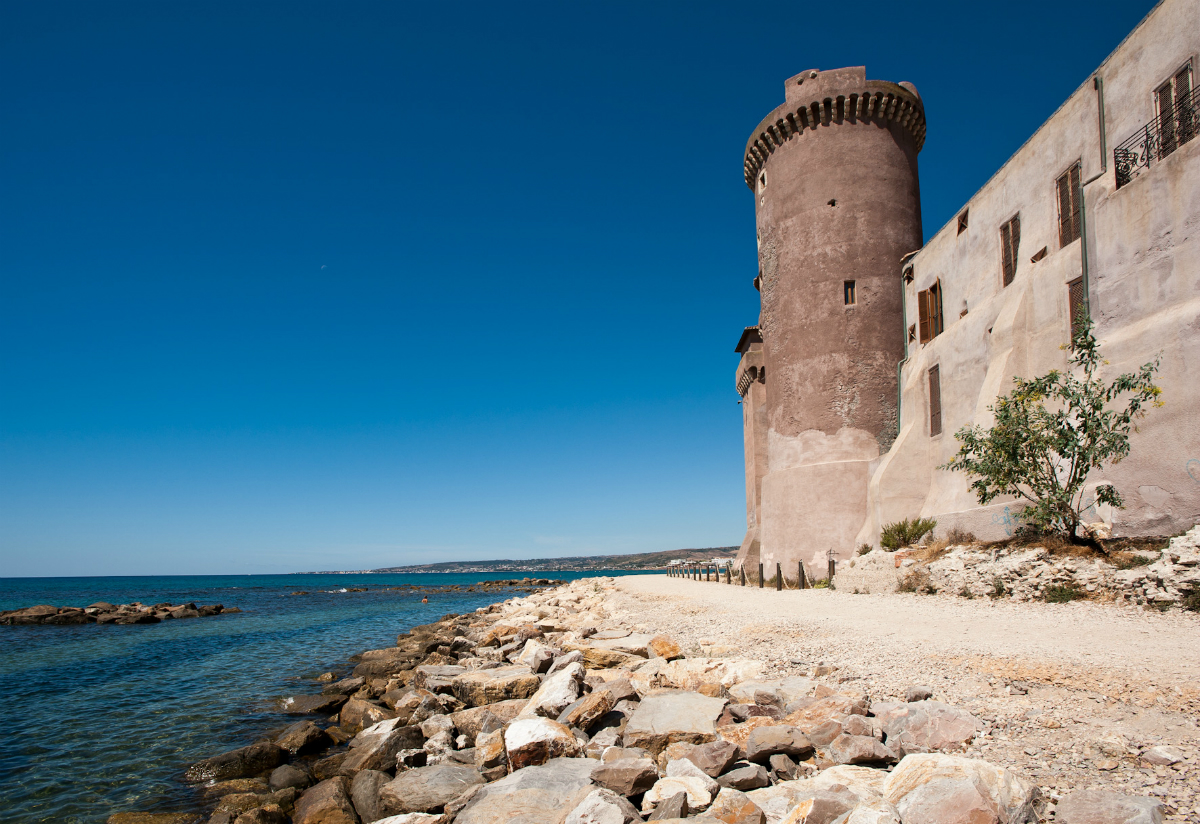
Castle of Santa Severa
CASTLE OF S. SEVERA TODAY
Thanks to the recent restoration works funded by the Province of Rome and Lazio Region, Castle of Santa Severa is starting to become one of the most important cultural centers in the coasline north to Rome; actually, the creation of a museum center is expected, including the already existing National Museum Antiquarium of Pyrgi, Maritime and Ancient Navigation Museum and the new Museum of the Rock, through which it will be able to go back over historic facts of the place.
In the Museum of the Rock will be displayed finds from excavations taken place in conjunction with the restoration works, curated by the Authorities and by volunteers of the Archeological Group of Territorio Cerite. The above-mentioned interventions have brought to light a domus romana from Imperial times in the Rock courtyard area, a necropolis and a Early Christian church from the fifth century, probably related to the cult of the saint with the same name.
The Museum of the Rock will be located inside the spaces of the Rock itself, which outfitting includes a 3D reconstruction of Castle of Santa Severa, based on the model of the Roman Domus in Palazzo Valentini. It will walk the visitors along a virtual journey from evidences of Neanderthal until Etruscan, Roman and Medieval ages. This multimedia project, curated by Piero Angela and Paco Lanciano, and the project for the excavation and restoration of the castle, have been exposed at the FORUM PA.
Inside the Rock, besides the Museum, are planned also some polifunctional spaces aimed to host temporal exhibitions and other cultural activities. The buildings surrounding the Rock courtyard are intended, on the other hand, to the creation of a congress center, with guest rooms in the high floors.
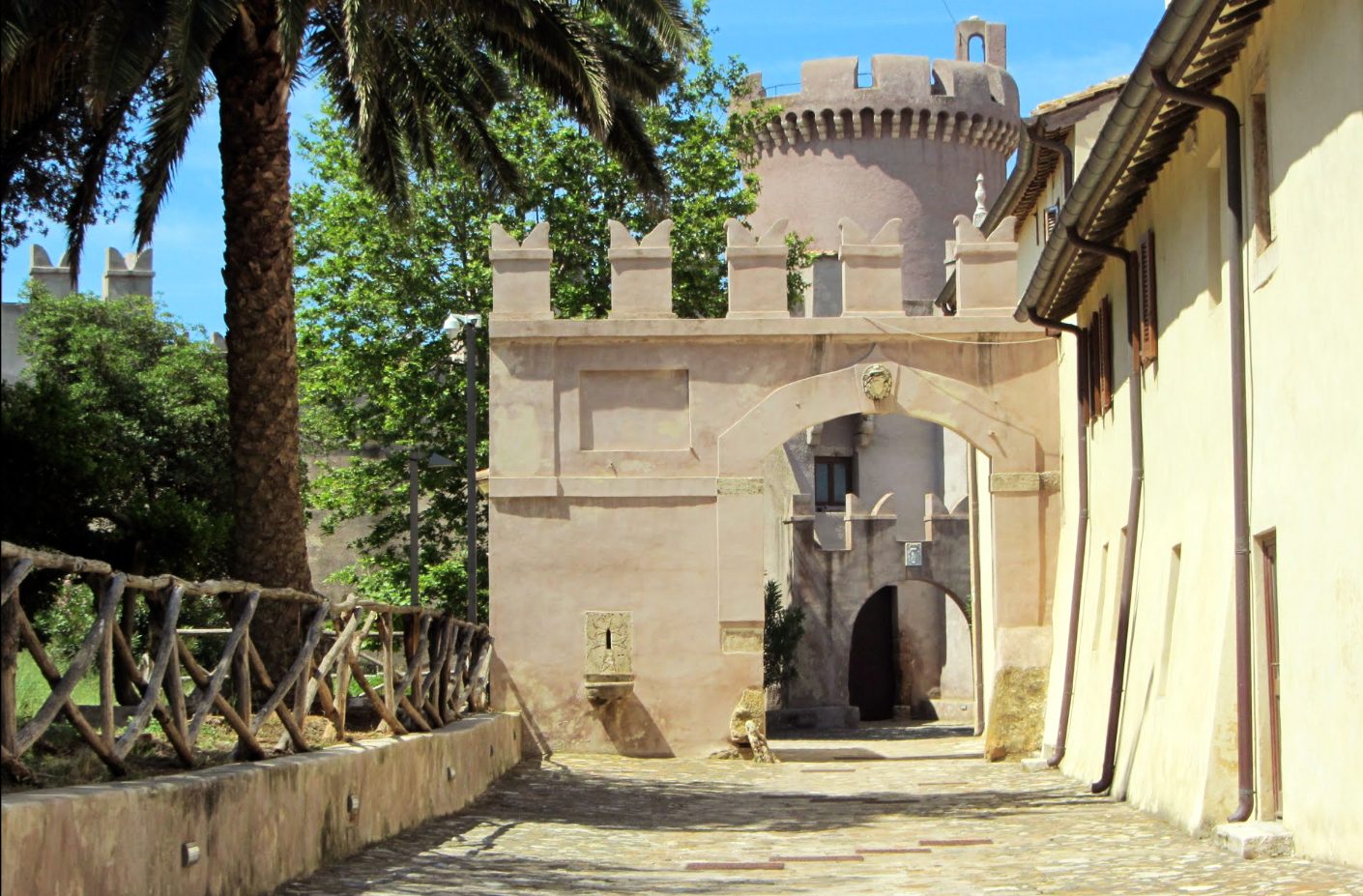
Castle of Santa Severa
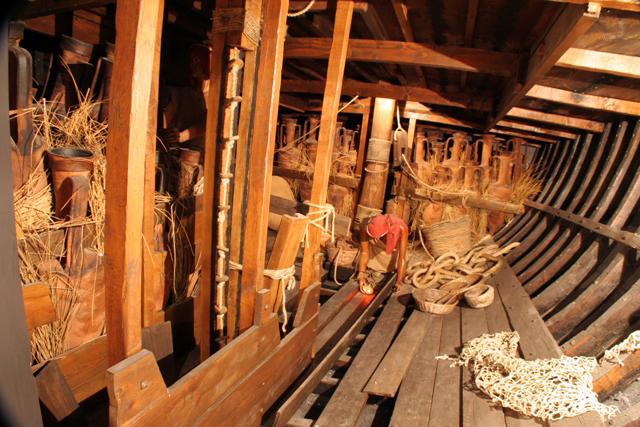
Castle of Santa Severa - Maritime and Ancient Navigation Museum
Once you get to the Castle, we recommend to visit straight away the Maritime and Ancient Navigation Museum, a space where you can go back over the Etruscan history of Pyrgi.
Besides the remains of Etruscan and Roman ships discovered not far from the coast, the museum offers specific itineraries related to maritime culture and to ancient navigation. Thanks to suffused lights, you are under the impression of being underwater: an authentic immersion in the past for young and adults!
Visit also the courtyard behind the museum, where you will find some ancient amphoras displayed, discovered along the coast of Ladispoli. These examples almost cilindrical were called dolia, and were used as containers dor wine coming from the Center and South of Italy. Finally, enjoy the suggestive local artisan shops embellishing the Castle spaces, where you can buy splendid ceramics, Medieval objects and works of art by local artists exhibited inside the walls.
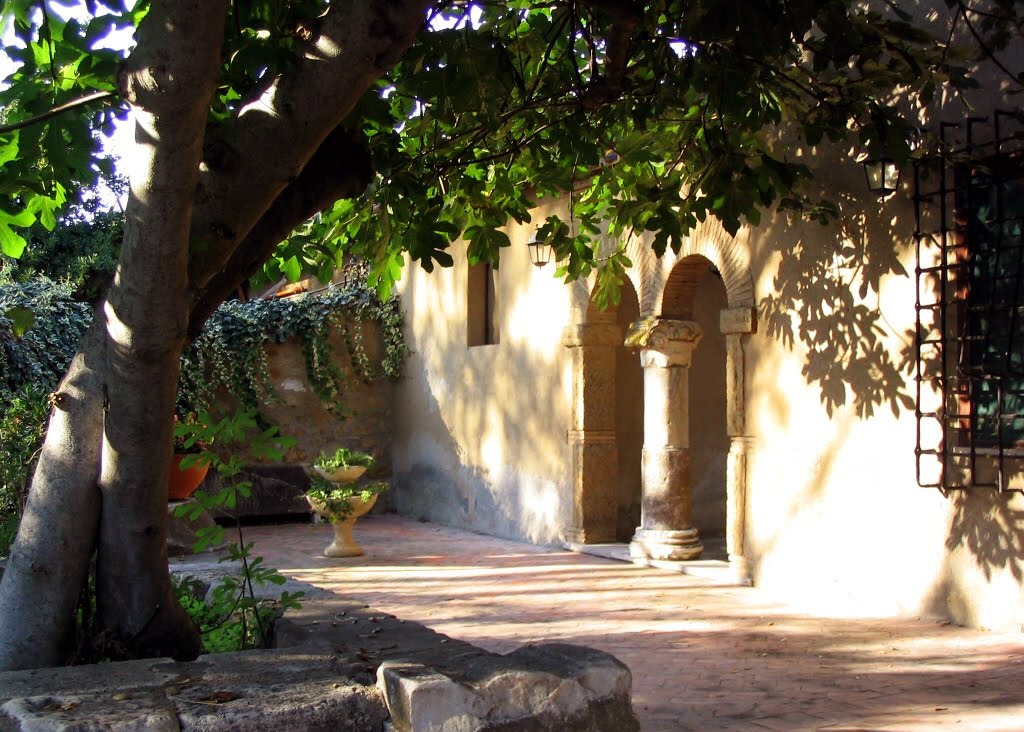
Castle of Santa Severa - Inner courtyard
CASTLE OF SANTA SEVERA: OPEN ALL YEAR ROUND
From the 25th of April 2017 the Castle will be open all year round! Before, it was only open to visitors in Spring and Summer.
It will be possible to visit the archeologicla findings from the latest excavation campaigns. Not only, also: 5 museums, a 3D room, a play center, 5 convention rooms, a cocktail bar, a book shop and 3 guided tours. In order not to miss a thing: free night tours during the special summer openings!
Last year, the free night tours were a great success with over 8 thousand visitors who came to admirare the beauties of this splendid historic, cultural and archeological pearl, which is again open to tourists and citizens.
To book online your visit and for further information on opening hours, prices and discounts, please refer to the "Useful information" box below or CLICK HERE
Useful information
Castle of Santa Severa
- HOW TO GET THERE
- By car: to get to Santa Severa district, drive along the SS1 Aurelia until Km. 52.500 then, following directions, turn towards the sea, driving along Via del Castello until your destination.
- By train: with TRENITALIA the closest stop to the district is Santa Severa Nord. From the train stop, to get to the castle, you need to walk for about 15 minutes. Alternatively, you can get off at the stop Santa Marinella and from there take the public transports to get to the City Museum.
- By bus: from Rome by transport COTRAL from Cornelia station stopping at Santa Marinella.- By bus: from the Port of Civitavecchia you can get the COTRAL line from Porta Tarquinia and get off at S.Severa Station. The Castle is a 10-minute walk away.- TIMETABLES
- From 1st April to 30th June and from 1st to 30th SeptemberTuesday through Friday from 9 am to 6 pmSaturday and Sunday from 10 am to 7 pm
From 1st October to 31st MarchTuesday through Friday from 9 am to 4 pmSaturday, Sunday and Holidays from 10.30 am to 5 pm
From 1st July to 31st Augustfrom Tuesday to Sunday from 3 pm to 12 pm. Last access to the paid areas by 11 pm.Closed on Monday, 25th December and 1st January.
The ticket office will close one hour before the premises closing.Further information on the official site - PRICES
Full ticket: €8.00
Reduced: €6.00 / children aged 6 to 14 years old / adults over 65 years old / groups of at least 12 people / groups of public school students when entrance at the same time (accompanying persons free admission) / when buying educational services (visit, workshop o audioguide) / teachers (document required, MIUR module) / MIBACT employees (document required).Free: children under 6 years old / inhabitants of Santa Marinella / disabled persons / tourist guides / owners of I.C.O.M card (International Council of Museum).
Family package: €16.00 2 adults + children under 18.
Evening Visit: €15.00. The tour includes a visit to the Castle with reading and suggestions of lights and sounds and a visit to the Cantina della Legnaia, Chiesa Paleocristiana, Sala del Nostromo, Sala dell’affresco and Torre Saracena.Further information on the official site



 PORT MOBILITY CIVITAVECCHIA
PORT MOBILITY CIVITAVECCHIA
















